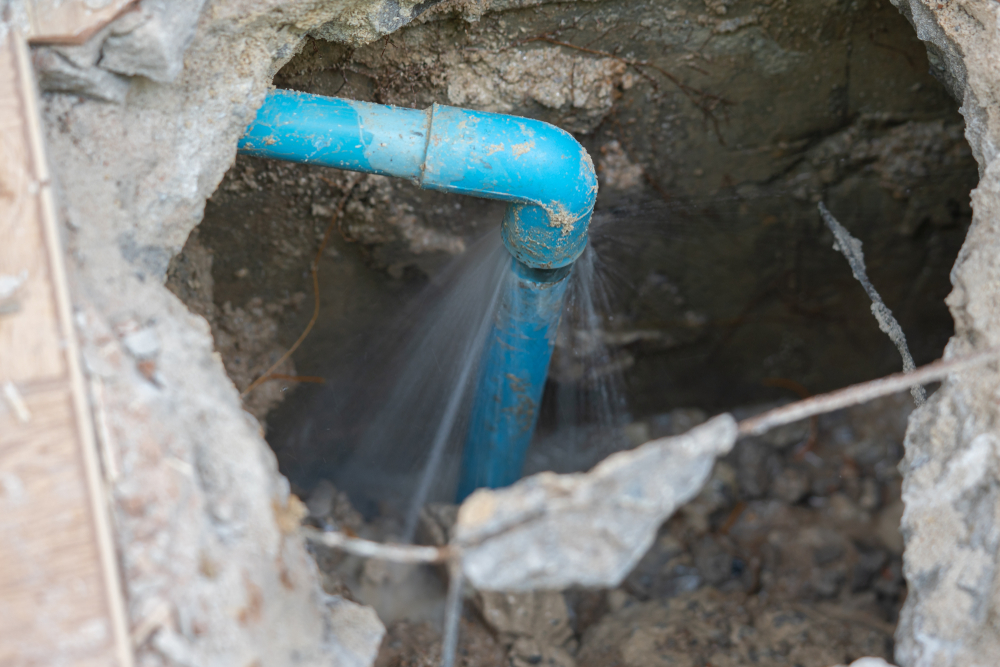6 Ways to Find Surprise Water Leakages in Your Home
6 Ways to Find Surprise Water Leakages in Your Home
Blog Article
Just how do you feel with regards to Leaking water lines?

Early detection of dripping water lines can minimize a possible disaster. Some tiny water leaks may not be noticeable.
1. Examine the Water Meter
Every home has a water meter. Examining it is a proven manner in which assists you discover leakages. For beginners, switch off all the water resources. Make certain nobody will flush, make use of the faucet, shower, run the washing device or dish washer. From there, go to the meter and also watch if it will transform. Since no person is using it, there need to be no motions. If it relocates, that indicates a fast-moving leakage. Furthermore, if you detect no changes, wait a hr or two as well as inspect back again. This suggests you may have a sluggish leakage that could even be below ground.
2. Examine Water Usage
If you find abrupt modifications, regardless of your usage being the very same, it implies that you have leakages in your plumbing system. An unexpected spike in your costs suggests a fast-moving leakage.
A consistent rise every month, also with the same behaviors, reveals you have a slow leakage that's also gradually escalating. Call a plumber to extensively inspect your building, especially if you really feel a warm location on your floor with piping underneath.
3. Do a Food Coloring Examination
When it comes to water usage, 30% comes from commodes. If the shade somehow infiltrates your dish during that time without flushing, there's a leak in between the container and also bowl.
4. Asses Exterior Lines
Don't neglect to inspect your exterior water lines too. Examination spigots by attaching a garden pipe. Needs to water leak out of the link, you have a loose rubber gasket. Change this and make sure all connections are limited. It will certainly assist get it expertly checked out as well as preserved annually if you've obtained a lawn sprinkler system. One little leak can squander lots of water as well as increase your water costs.
5. Evaluate the scenario as well as check
Home owners need to make it a habit to check under the sink counters as well as also inside cabinets for any bad odor or mold and mildew development. These two red flags indicate a leakage so prompt attention is needed. Doing regular evaluations, even bi-annually, can conserve you from a significant trouble.
Examine for stainings as well as weakening as most devices as well as pipes have a life expectancy. If you presume dripping water lines in your plumbing system, do not wait for it to escalate.
Early discovery of dripping water lines can mitigate a possible calamity. Some little water leakages may not be visible. Examining it is a surefire way that helps you uncover leaks. One little leakage can lose loads of water as well as increase your water bill.
If you suspect leaking water lines in your plumbing system, do not wait for it to escalate.
How to Know If Your Home Has a Hidden Leak
Water Meter Reveals Inexplicable Water Usage
If you’d like to test whether or not there’s a leak somewhere in your home, you can do this using your water meter. Here is how to conduct the test:
Don’t use any water in your home for at least 30 minutes; this also means not turning on faucets or water-using appliances.
Go outside, and check your water meter for activity.
If your water meter shows that there was activity, even though no one was using any water, this proves that there is a leak in your home.Visible Mold or Mildew Growth
Leaks behind walls create moist, dark environments that allow mold and mildew to grow and thrive. Eventually, you might see mold growth forming on the wall closest to a hidden leak.
If mold is growing in an area that receives a high amount of moisture, such as a bathroom, it may simply be an indication that better ventilation is needed. However, if you see mold growth on a wall or the ceiling in an area where you would not expect, you probably have a hidden leak.
Musty, Mildew Odor
Sometimes you might not be able to see the mold or mildew that is growing as a result of a leak. However, the smell can give the problem away just as easily. If you catch a whiff of something musty, there’s a good chance that old water is collecting somewhere in your home that you can’t see.
Stained/Warped Walls, Ceilings, or Floors
When your home soaks up water, a variety of red flags can become visible, including ceiling stains, bubbling drywall, warped walls, and sagging floors. While these issues can be caused by excess humidity, they can also be signs that a pipe or plumbing connection has started leaking behind your walls.
Inexplicably High Water Bill
After a while, you get a general sense for what your water bill should be. If you own a pool or sprinkler system, your bill will tend to be higher during summer. However, if you receive a water bill that seems especially high, and you can’t figure out what caused it, then you may have a hidden leak somewhere that’s increasing your bill.
https://www.plumbingjoint.com/blog/2019/july/how-to-know-if-your-home-has-a-hidden-leak/

I was shown that write-up about Leaking water lines through a friend on our other web blog. Enjoyed reading our blog posting? Please share it. Let other people check it out. Thanks so much for your time invested reading it.
Report this page